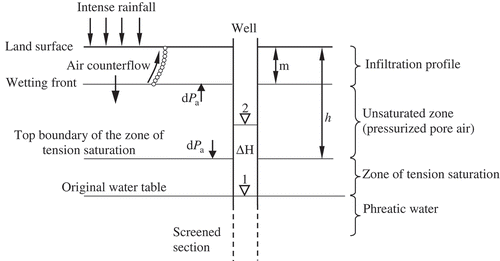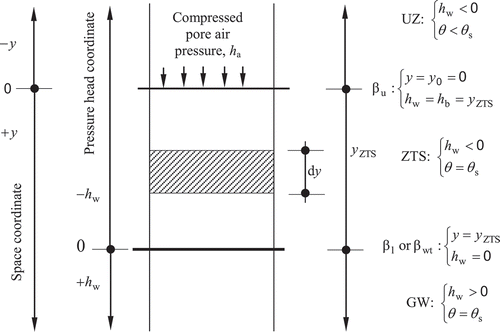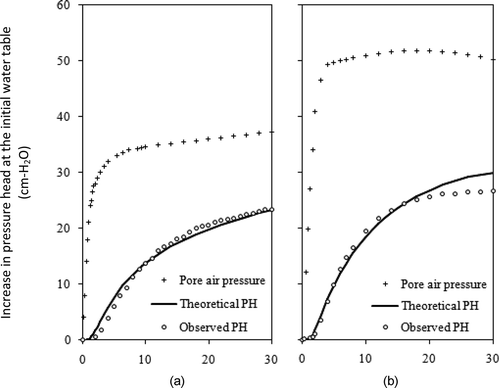Figures & data
Figure 1. The Lisse effect. The rise in water level in a well, ΔH, as result of the action of increased pore air pressure, dPa, on the upper boundary of the zone of tension saturation. m is the depth of the infiltration profile, h is the depth from the ground surface to the top boundary of the zone of tension saturation (modified from Weeks Citation2002).

Figure 2. Idealized free body diagram of the zone of tension of saturation (ZTS) used in the derivation of the differential equation of diffusion of pressure head through pore water. UZ is unsaturated zone and GW is groundwater (under positive pressure).

Table 1. Physical properties of the soils used in the laboratory experiments.
Figure 3. (a) Laboratory experimental set up. is height of the zone of tension saturation, yuz is height of unsaturated zone, yw is height of water ponding on the soil surface, βss is soil surface, βu is upper boundary of the zone of tension saturation, β1 or βwt is the lower boundary of the zone of tension saturation or the water table (zero pressure line), papp is pore air pressure probe, tdr is time domain reflectometry, and mt is miniature tensiometer. (b) Instrumentation layout.

Figure 4. Theoretical and observed pressure head (PH) at the lower boundary of the zone of tension saturation (initial water table, βwt) as a result of compressed pore air pressure imposed on the upper boundary of the zone of tension saturation in (a) Coarse soil (b) Medium soil and (c) Fine soil. Pressure head diffusivity coefficients, de, for the respective soils are 200, 130 and 65 cm2 min−1.

Figure 5. Theoretical and observed pressure head (PH) at the lower boundary of the zone of tension saturation (initial water table, βwt) as a result of (a) a lower and (b) higher, compressed pore air pressure imposed on the upper boundary of the zone of tension saturation in the Fine soil. Pressure head diffusivity coefficient, de, for the soil was 65 cm2 min−1.

